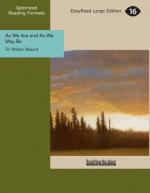Or, a pilgrim may consider the City with special reference to the great Houses which formerly stood within its walls. There were palaces in the City—King Athelstan had one; King Richard II. lived for a time in the City; Richard III. lived here; Henry V. had a house here. Of the great nobles, the Beaumonts, Scropes, Arundells, Bigods all had houses. The names of Worcester House, Buckingham House, Hereford House, suggest the great Lords who formerly lived here. And the names of Crosby Hall, Basinghall, Gresham House, College Hill, recall the merchants who built themselves palaces and entertained kings.
Again, there are the City Companies and their Halls. Very few visitors ever make the round of the Halls: yet they are most curious, and contain treasures great and various. It is not always easy to see these treasures, but the conscientious pilgrim, who, by the way, must not seek entrance into these Halls on the Sunday morning, will persevere until he has managed to see them all.
As for the sights of the City—the things which Baedeker enumerates, and which foreign and country visitors run to see—the Tower, the Monument, the Guildhall, the Mansion House, the Royal Exchange, the Mint, St. Paul’s, and the rest, I say nothing, because the pilgrim does not waste his Sunday morning over things to be seen as well on any other day. But there are some things to be seen every day which are best approached on Sunday, by reason of the peace which prevails and a certain solemnity in the air. I would, for instance, choose to visit the Charter House on a Sunday morning, I would sit with the Pensioners in their quiet chapel, and I would stroll about the peaceful courts of that holy place, venerable not only for its history but for the broken and ruined lives—often ruined only in purse, but rich in honour and in noble record—of the fifty bedesmen or pensioners who rest there in the evening of their days. And quite apart from its associations, I know no more beautiful place in the City or anywhere else than the ancient Charter House.




